ALP: detailed analysis of our Omega3 vitamin
Welcome to the viewers of this new episode of SEIML Ventures. This is the third in our VLOG from Arctic Light Products AS (ALP) of Tromsø, Norway. The topic of today’s VLOG is about a detailed analysis of the ingredients in fish oil and the differences that make ALP’s product a premium offering.
You can see the Previous interviews from Arctic Light Products AS here:
https://seiml.com/venture/alps-international-expansion/
https://seiml.com/venture/interview-with-arild-karlsen-arctic-light-products-as/
https://seiml.com/venture/discovering-tromso-norway-the-home-of-arctic-light-products-as/
Script
Interviewee: Mr. Arild Karlsen (AK)
Title: Founder
Company: Arctic Light Products AS (ALP)
URL: https://www.northernlightproducts.no/english
Interviewer: John D. Evans (JE)
Date of interview: 21 February 2022
Overview
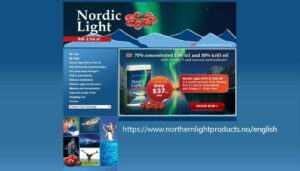
JE Okay, good afternoon. Welcome to all the viewers of this new episode of SEIML Ventures. This is our third vlog from Arctic Light Products AS of Tromsø, Norway. The topic of today’s vlog is a detailed analysis of the ingredients in fish oils and the differences that make ALP’s product a premium offering. You can see the previous interviews in this Vlog series in the links below in the script on the website. And we’re speaking with Mr. Arild Karlsen, who is the founder of Arctic Light today as we do in each vlog. Let me just start off by giving a little bit of an overview. To preface this, there are two critical components when analyzing a fish oil capsule with the first being the ingredients inside the capsule and the second being the capsule covering. So, you know, as a little bit of background chemistry, how does one classify Omega3 fatty acids? The three types of Omega3 fatty acids involved in human physiology are α-linolenic acid abbreviated to ‘ALA’, eicosapentaenoic acid abbreviated to EPA and docosahexaenoic acid abbreviated to DHA. ALA can be found in plants, whereas DHA and EPA are found in algae in fish. Marine algae and plankton are the primary sources of Omega3 fatty acids and since we are looking at fish oils, we will only be considering EPA and DHA. So, let’s get a bit of background from Arild.
Background Chemistry: How do you classify omega-3 fatty acids?
AK Yes, hello John. Many Omega3 capsules only have concentrated fish oil, they do not have the mix with a krill oil. Whereas ALP is quite different from the other of Omega3 capsule in that that is mixes with 70% fish oil and then 30% krill oil. Yes, John.
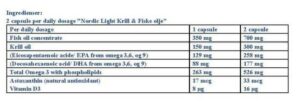
JE So, 70% fish oil and 30% krill oil, the Arctic light products contain both of those and you can see that in the listing of the ingredients in the category. So therefore, we can see that also, not all fish oil is the same. So let me just take a quote from a website that specializes in the analysis of fish oils. It says there is a huge amount of variation between fish oils, and it is vital to know what to look for before scouring the web in search of the best one. There are several key considerations which come into play when reviewing these vitamin supplements. It is important to find a supplement which contains high levels of EPA and DHA per serving, as we’ve just talked about. Use a small species fish, which are less prone to accumulating toxins, is made by a reputable manufacturer who follows good manufacturing processes and has won a high rating from the International Fish Oil Standards programme and which contains no or barely detectable traces of contaminants. It’s worth stressing that first point since EPA and DHA are the most potent and therapeutic proven forms of Omega3 and are far superior to the plant-based programmes.
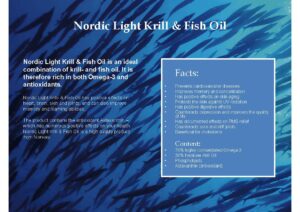
AK Yes. Very common concentration of EPA and DHA are in our big proctor Omega project is cod liver with a classification of TG 18/12 EPA/DHA concentration. ALP buy the fish oil from the factory with a rate of TG 33/22, a higher concentration that found in the more common Omega3 oil. As mentioned about toxins, the fish is very important. ALP use a standard fish oil ordered from cod and others and Sardines. It’s the flesh of fish, not the fish liver common in many other Omega3 oil. There are some price points to help make comparisons of different types of fish oil, John.
Not all Fish Oil is the same
JE Okay, so just to summarize, you use fish oil with a slightly higher ranking a higher concentration what you say as TG 33/22, which is both the DPA and the EPA measurements. Whereas more commonly used in many, not all, but in many other fish oils is a lower concentrate, which is TG18/12, a very common usage. And then the other important differentiating factor, which is not revealed in these concentration numbers, is that your fish oil comes exclusively from the flesh of the fish, not the liver. And so that’s how you address avoiding having contaminants in your product. And that’s a very important distinction that you wouldn’t be able to know just by reading the label. So, we put together to sort of quantify these differences. You know, if we look at fish oil, and I’m assuming an exchange rate of one US dollars to 7.75 Norwegian Corona, Arild does his business mostly in Norwegian kroner, but I’ll translate it into US dollars for the reader. General cod liver fish oil, the lower concentrate TG 18 12 currently costs per liter Norwegian kroner 80 which is about US dollars 10.32 cents. Whereas the higher concentration fish oil which comes from the flesh and not deliver that Arctic Light Products us costs about Norwegian kroner 155 or US dollars 20.00. So, in terms of the fish oil that is going into the Arctic Light product, they’re using a quality that that is almost double the price versus most of the of the standard Omega3 vitamins in the market. Now just switching to the second point, the addition of krill oil and there’s an important factor here. Krill Oil unlike fish oil is derived from tiny crustaceans called Antarctic krill. They only come from the Antarctic, and these sea creatures are a dietary staple for many animals. Like fish oil, krill oil is rich in both EPA and DHA. While fish oil and krill oil are both excellent sources of EPA and DHA, some studies suggest that the body may absorb and use fatty acids from krill oil even better than those from the fish oil. So, there’s another important differentiating factor and that is the use of krill oil in the Arctic Light products that is very rarely found in other Omega3 vitamins. So just tell us a little bit more about that and those just remind the readers of the ratios again, Arild.
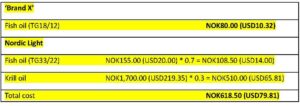
The addition of Krill oil
AK Yes, the capsule it should also be emphasized that the factory, PharmaTech, produces the soft capsule. Soft gelatin capsule and has many certifications for its GMPs. The capsules that are made from the fish gelatin, not porcine or bovine type. The capsule liver not fat oil feeling in demand. More moment, The capsule dissolves in the stomach as I said in one day. The capsule it’s very important for several reasons but partly below the efficacy of the content being into the body. Aker BioMarine studies have shown that EPA and DHA in the bloodstream is higher with krill oil. Our waters slow bad oil, that way the fish oil, they are fat, fat oil must be broken down in stomach plate to absorb.
JE Okay, so when we’re talking about the capsules, there, there’s another important element and this never gets onto the label about how effectively the capsule dissolves and absorbs in your body. And so, the soft gel capsules that that are that have been tested for your company by AkerBioMarine. I think sometimes get absorption rates up around 90%, a very high effectiveness of absorption of the capsule in the body’s system. Whereas other more common Omega three vitamins they have ill they have tested sometimes don’t get above more than 50 to 60%. So, it’s interesting to see the differences and both in terms of the inputs, fish oil and krill oil, the quality or concentrate of the fish oil, and the elements of the capsule. And all of these things can make a big difference when comparing products. And these things are not obvious on the label that typically just list EPA and DPA and things like that. So, in conclusion, Nordic Light is a premium fish oil product, and sells at a higher price than many common Omega3 fish oils. And the viewer will be able to see a little calculation I’ve done with the different input prices to compare Arctic lights 70% fish, 30% krill oil at the prices advised versus against a standard fish oil without any krill. So, they’ll be able to do a price comparison there. And that that helps to compare, you know whether you’re getting quality for money. And so, when someone’s looking at different Omega three capsules, you know, there’s a few questions they want to ask going beyond the label. They can look at the label and see what is the EPA and DHA concentration the fish oil being used, but also what sort of fish oil? And where has it been taken from not just the type of fish, but does it come from the liver or does it come from the flesh? importantly, is krill oil being added to the mix? Very few do that. And then perhaps the final and other important thing is to look at the capsule, and the absorption rate in the product. So there really is a lot of difference in the quality and inputs of different fish oils. And when we look at the components, when we’ve done some fundamental research on the Arctic Light products, which has been tested by Aker BioMarine, we can see it really is a premium product. And we give you the basis for you to compare against other products when you’re deciding what is a good one for you. So, it’s been a little bit of a technical thing but we think that’s very important, because a lot of the important aspects of a product are not easily visible from a quick reading of the label. And so, we wanted to give you all of the fine details, confirmed details of the Arctic Light product. So at least you have all of those criteria that you can compare against any other product that you’d like to do. So, it’s a premium product. It doesn’t necessarily cost a lot more than another. But you need to understand what’s going into it to decide whether you’re getting value for money and what other products provide for you. So Arild, that’s our technical conversation for today. It’s a little bit brief, it’s a little bit different than another one, but I think as we are now not just looking to sell the product but also find wholesale distributors, which we know want these types of technical details to compare themselves to other products that they’re also looking to distribute, then I think these are some important facts to put out. And all of these details will be written down and shown in graphics on the video. So, I see itis getting light in Norway. Now, the 24-hour, darkness has left and the spring is coming, is that correct?
AK Yes is correct is fine light now. There are going every day we get the more and more and then the blue light in the starting of today.
JE What is the temperature there today?
AK Nine minus degrees.
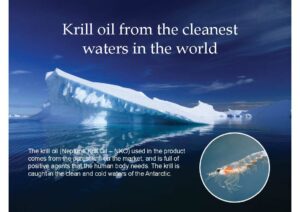
JE It’s interesting, and this is just my closing comment because we mentioned how the krill oil comes from crustaceans that are only found in the Antarctic. And in this day and age where we have to be so concerned about pollution and contaminants in the food chain, then being very high north in the Arctic Circle, which is where you’re located and where Tromsø is located or being in the Antarctic Circle where the crustaceans that provide krill come from these very cold polar regions are a very important source of the food inputs that we get at least when it comes to fish and water animals. So, you may be up north, but you’re in the right place to be in this type of business, I can say. Yeah, so thank you very much for your time today. We hope the viewers find this informative. There’s a little bit of technical detail, but we thought that was worthwhile. So, thanks for your time Arild and we’ll see you next vlog.
AK You’re welcome. Take care, bye bye.
End.








